The missile pod(s) must be towed to overcome air transportability hurdles, the next challenge is how they can be loaded, unloaded, and transported to where they’re needed.
Loading and Unloading the Aircraft
The image below shows a PAC-3 missile container being loaded onto a Chinook.
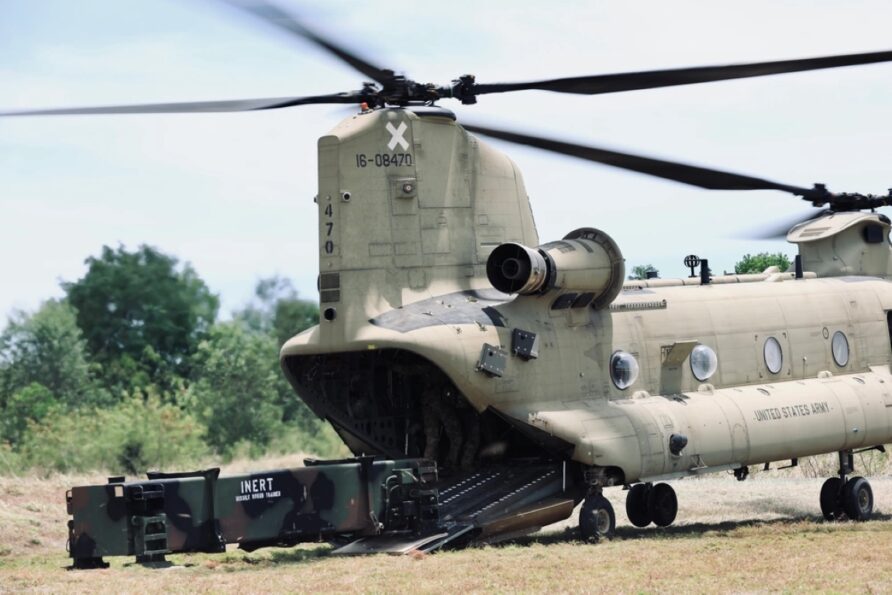
PAC3 is a metre or so longer than either of the NSM or GMLRS pods, for scale, and because Chinook has rollers in the floor it can be loaded and unloaded like.
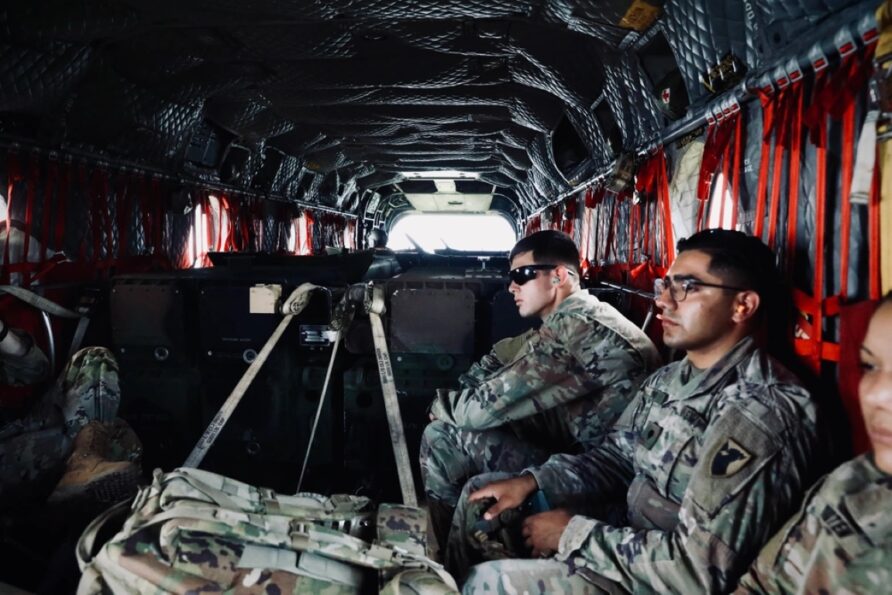
The image above provides some measure of scale in a Chinook.
The US Marines use the CH-53, an E model, in the images below with NSM.
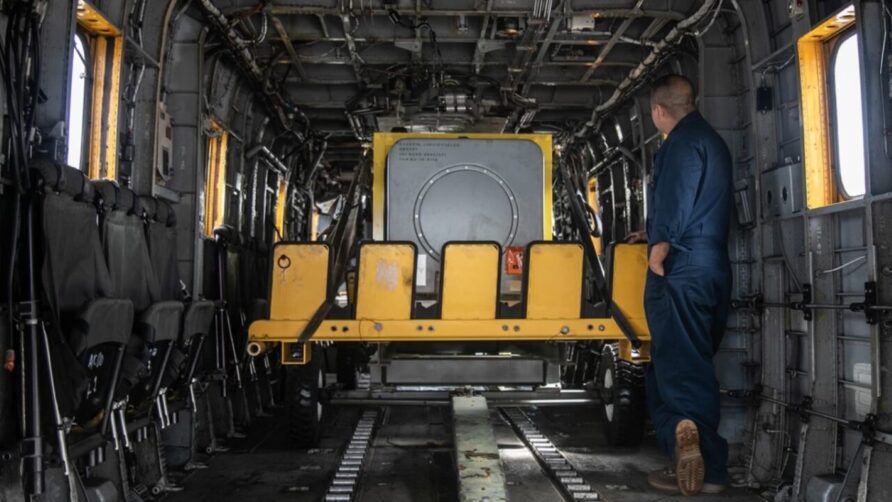
Not a launch trailer, but simply used for transport, it is loaded and unloaded from the aircraft manually.
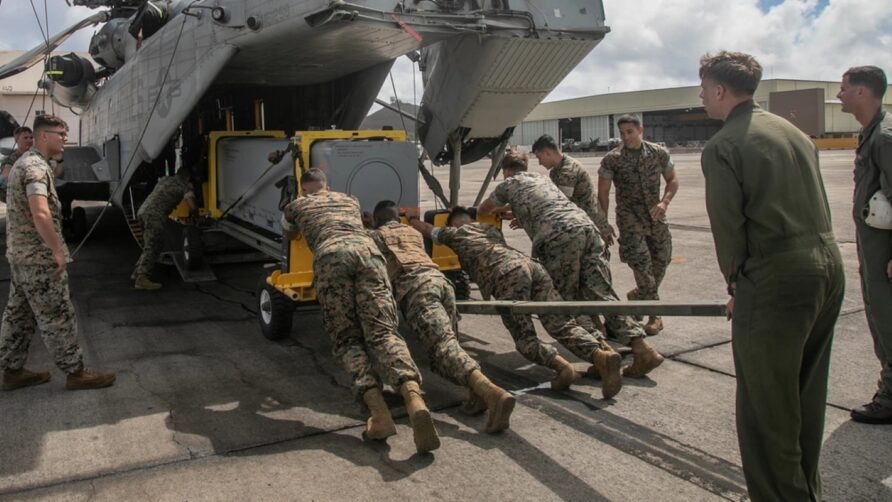
For the NSM/GMLRS concept in this series of posts, I think we should aspire to better, certainly with a smaller number of personnel.
Trailer Mobilisers
It is possible to use the towing and support vehicle to reverse the trailer into the aircraft, and then tow it out at the destination.
However, this might be limited by height and ramp angle, the enduring constraint with internal carriage, and potential weight limitations on the ramp.
If the trailer and towing vehicle are carried in separate aircraft, the trailer still needs to be loaded and unloaded.
Trailer mobilisers can be used to do this.
Most military organisations have some experience with battery-powered aircraft handlers, such as the Curtiss-Wright Mantis.
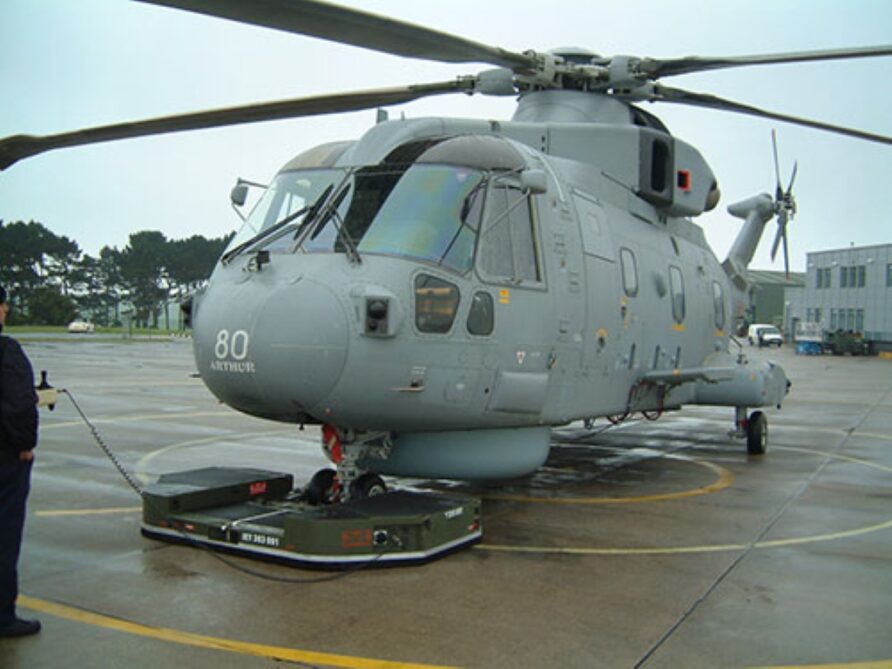
Even though ramp angles might limit utility, these are not designed for soft or uneven surfaces.s.
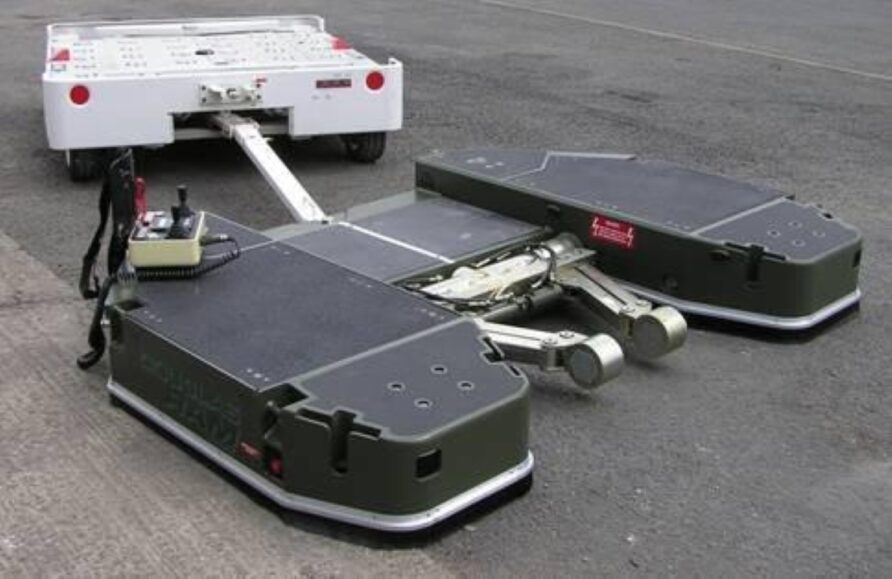
This is a video of the Trax Trailer Dolly, from Canada.
As can be observed in the video, the trailer hitch is situated over the centre of the tracked mobiliser and is capable of being raised and lowered.
It is 1.2m long, 0.74m wide, and 0.35m high. It weighs 150 kg but can safely move a 6-tonne trailer.
The trailer would need to be fitted with a NATO standard hitch, but the low height means transport in the aircraft would be relatively easy, tucked underneath the trailer.
The adjustable height of the hitch means it can accommodate ramp angles.
This is an elegant solution, safe, and easy to use, and in each of the aircraft (even Merlin) would fit within the dimensional constraints.
Using something like this on Merlin, V22, and C212 is the only practical option.
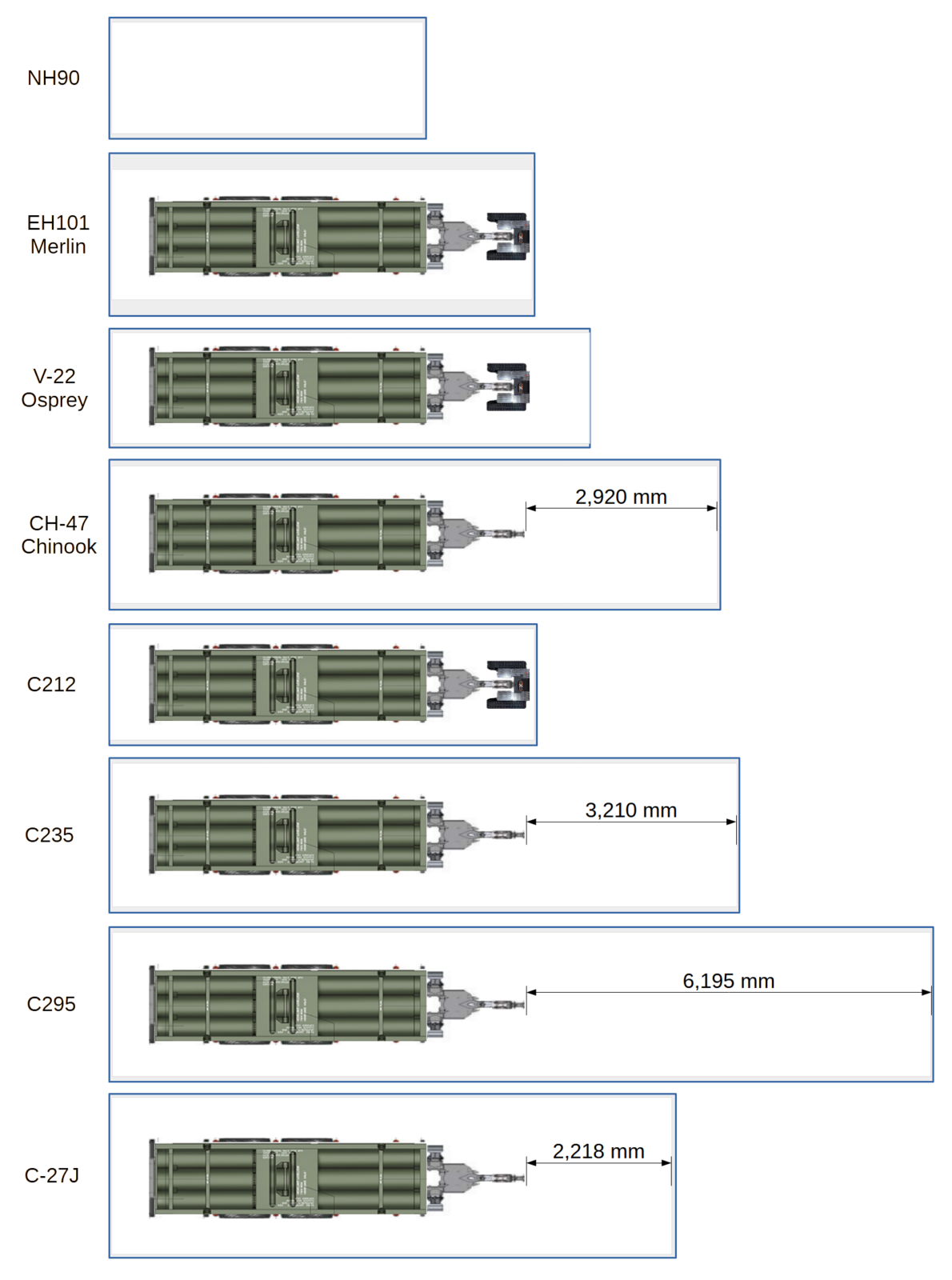
Closer to home, Alma Levelling Crawlers are designed for moving heavy loads in tight spaces.
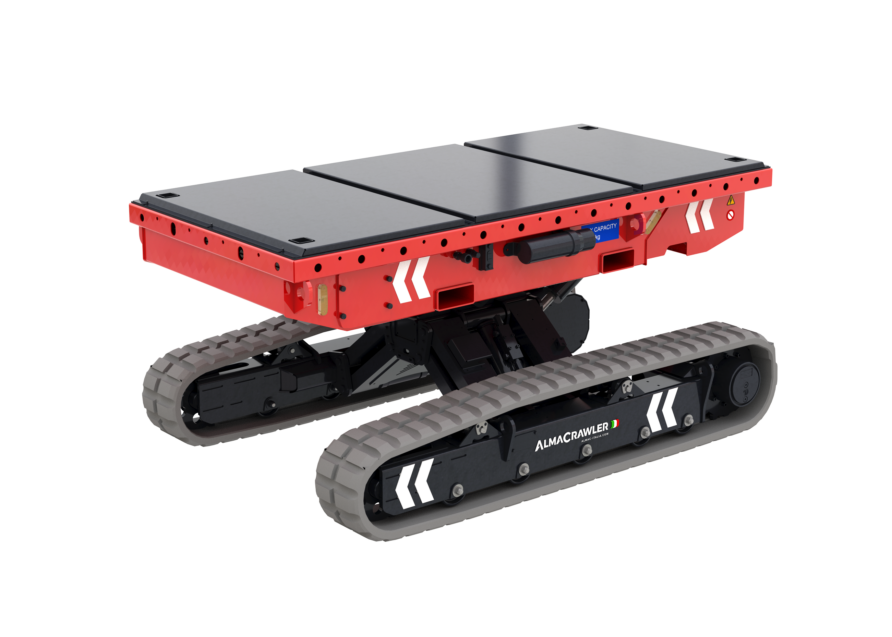
Their levelling platforms can be adjusted up to 20 degrees.s.
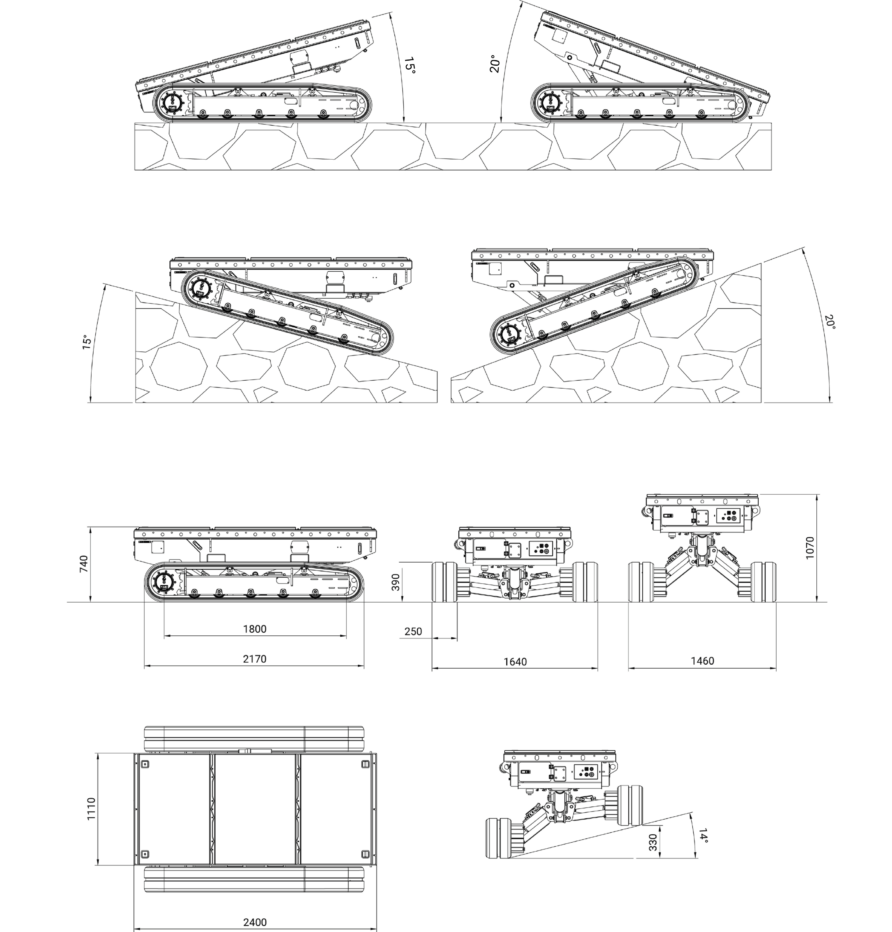
The tracks can be adjusted to eliminate awkward angles. Modifying the load platform to accommodate a trailer hitch would be straightforward.
The device shown above is too big for a 3 tonne trailer, but smaller versions are available.r.
There are plenty of similar devices, including the Hooka, made in the UK, and those specifically designed to move containers in and out of aircraft from CDK.
Once safely out of the aircraft, the towing vehicle would take over.
There is also a class of vehicle that can not only serve as a mobiliser, but also a remote control towing vehicle.
They would only operate at a walking pace, or slightly above, approximately 7 kph. Slope mowers like those manufactured by McConnel in the UK would fit into this category.
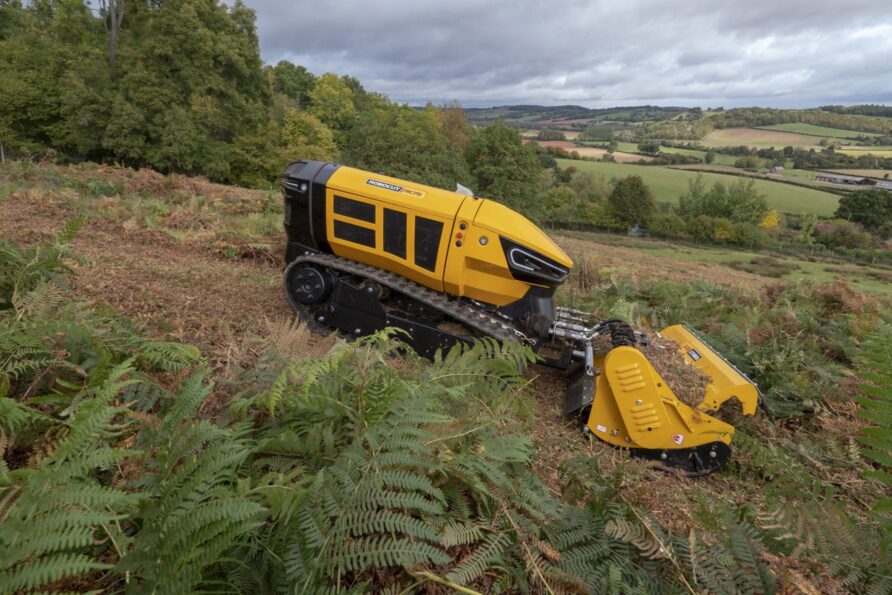
They are designed for steep slopes and all day working.
The T500 model is less than 1.4m wide and 2m long (without attachment) so would easily fit in the aircraft as indicated above.
The forestry industry provides another option, the Serra Sawmills Iron Horse Essence.
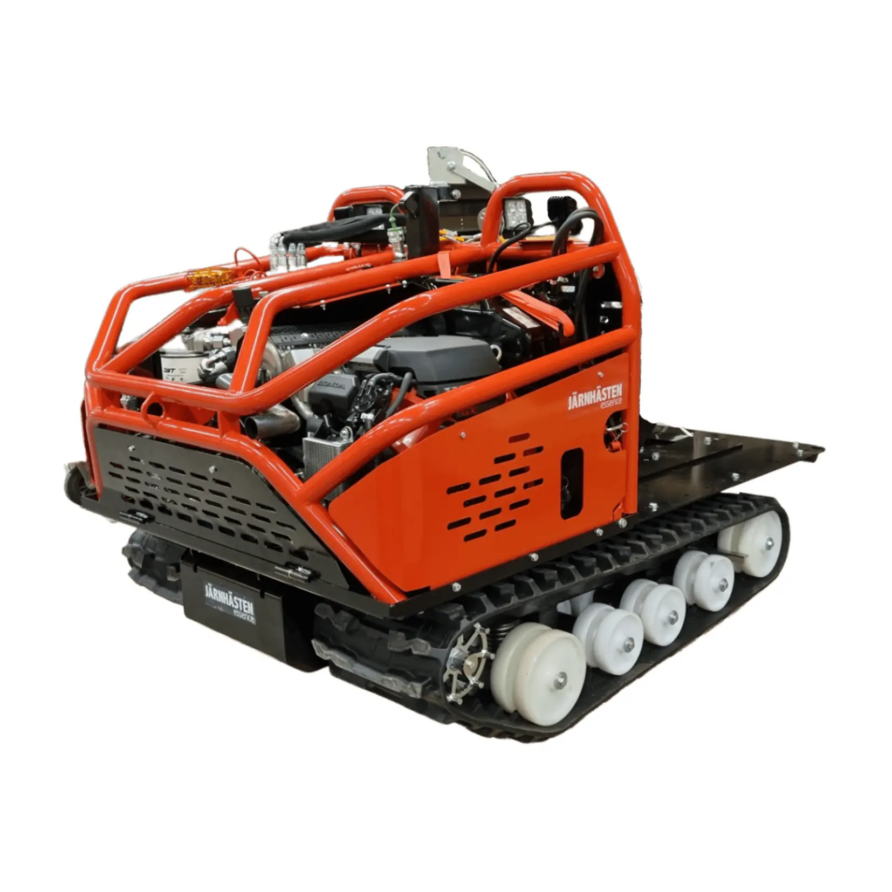
Again, compact and capable, but limited to walking speed.
The video below is of a smaller alternative design, but the concept is the same.
Worth noting that none of these options has space for crew or the fire control system components.
Towing Vehicle Challenges and Requirements
By this point, we have discounted NH90.
Merlin, V-22 and C212, have no practical means of having a towing vehicle on the same aircraft as the trailer (apart from a mobiliser).
Chinook, C-235 and C-27J have challenging requirements because they have between 2.2m and 3.2m of free space available.
C-295 has less of an issue.
This means that unless we can find a towing vehicle that is no longer than between 2.2m and 3.2m long, it will have to go on a separate flight, and we must accept this reality for Merlin, V-22 and C212 regardless.
A towing vehicle can be used for just that, or it can also carry the crew, fire control systems, personal equipment and other stores such as fuel and camouflage.
Towing Tractors
Long story short, I was unable to find any vehicle at 2.2m long that could tow a circa three-tonne trailer, sorry C-27J users.
The gap between 2.2 and 3.2 meters offers better alternatives.
A few examples…
The Loglogic Tooltrak is a compact-tracked tractor and tool carrier
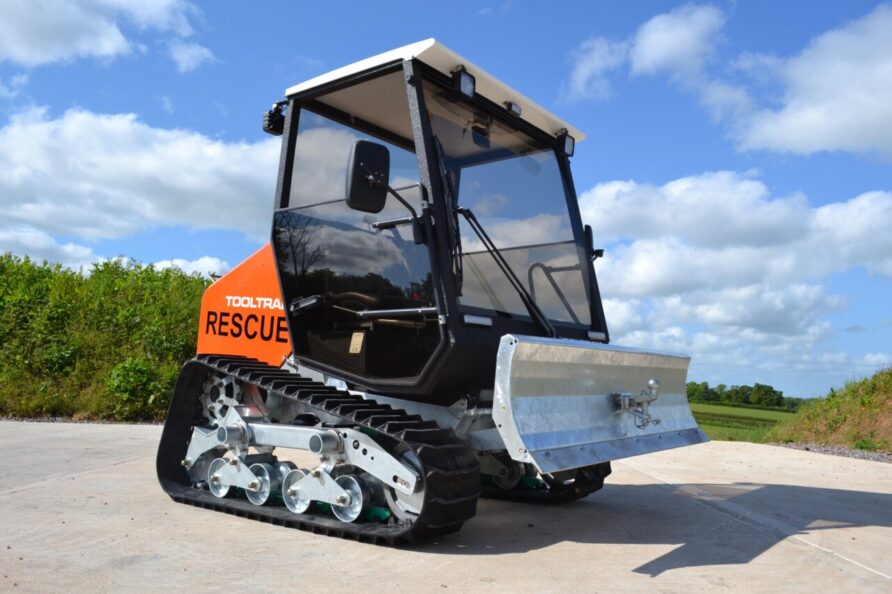
The Tooltrak is useful because of its short length, 2.48 meters including the front linkage. It is powerful enough to tow a large trailer and has a power pack for a hydraulic assist trailer.
At 2.149 meters in height, it would not be suitable for internal carriage unless the cab was replaced with a folding ROPS, so some development work would be needed. It weights 1.3 tonnes and the width over the tracks is 1.64m
The RNLI uses them to launch and retrieve inshore lifeboats.
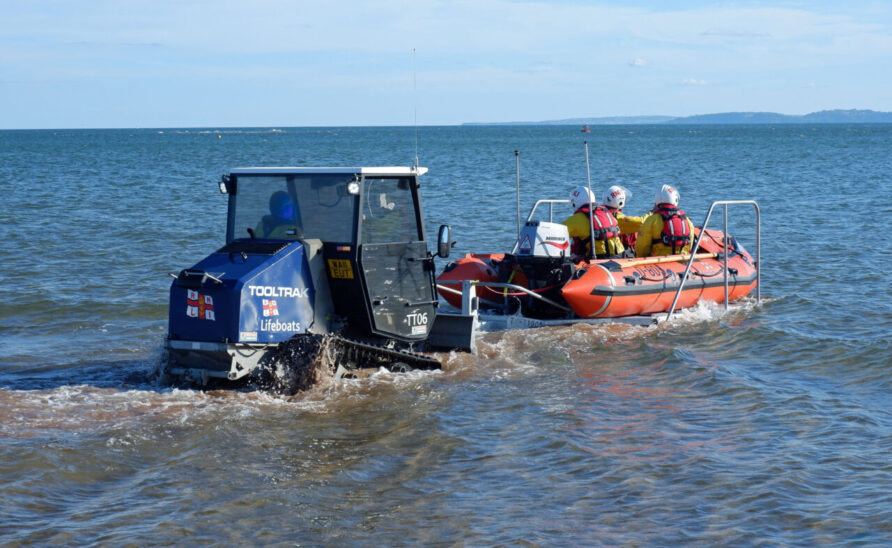
I’m not sure if Yanmar still makes these, but the diesel AC18/AC21 was a capable and compact machine.
Weighing 830 kg, it was 2.33m long, 1.25m wide, and 1.82m high to ROPS. Its rear-mounted PTO could also be used with some PTO-driven trailers described in the previous post.
Both of these would be useful because they can make use of powered trailers for additional safety and mobility, although they are limited by lack of payload for anything else besides the operator.
Actual towing capacity would also need to be confirmed.
An alternative to a towing tractor is a UGV.
It is also capable of towing a trailer weighing up to 3,500 kg.
The vehicle is 2.659 meters long, 1.58 meters wide, and 1.09 meters tall. Attachments such as cranes or sensor masts will increase height if they are fitted.
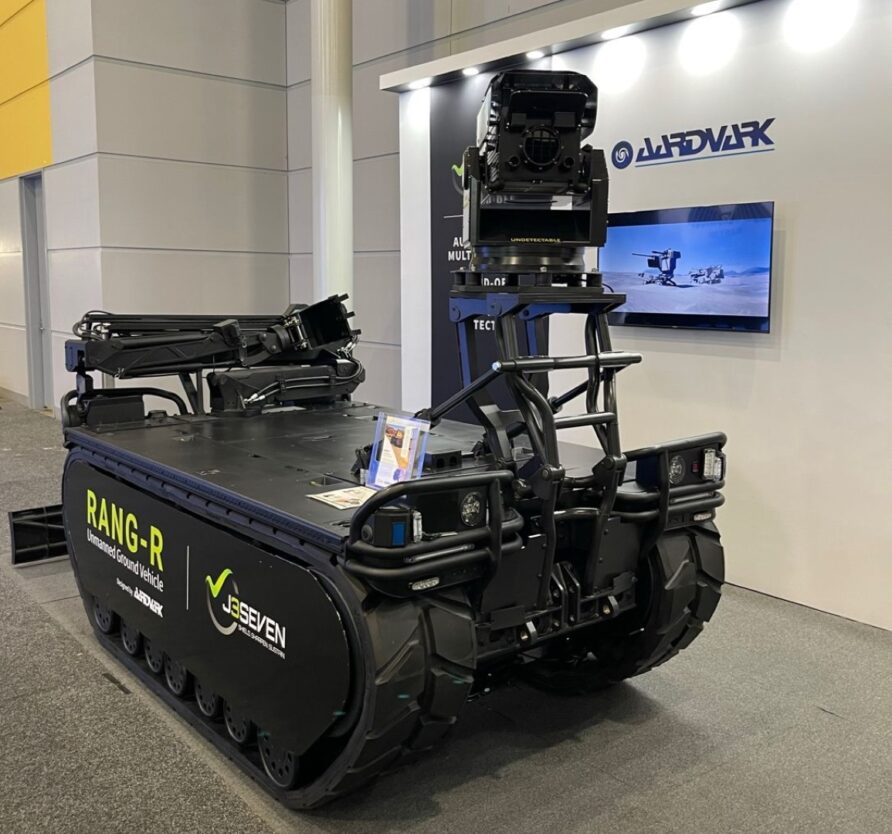
Over mixed terrain, the hybrid diesel/battery power plant provides a range without refuel of approximately 100 km.
With a fifth wheel or gooseneck coupling fitted to the deck, this could also potentially fall within the 2.2m length C-27J limit.
There might also be some opportunity to mount some fire control systems in load bed mounted enclosures.
I quite like this option.
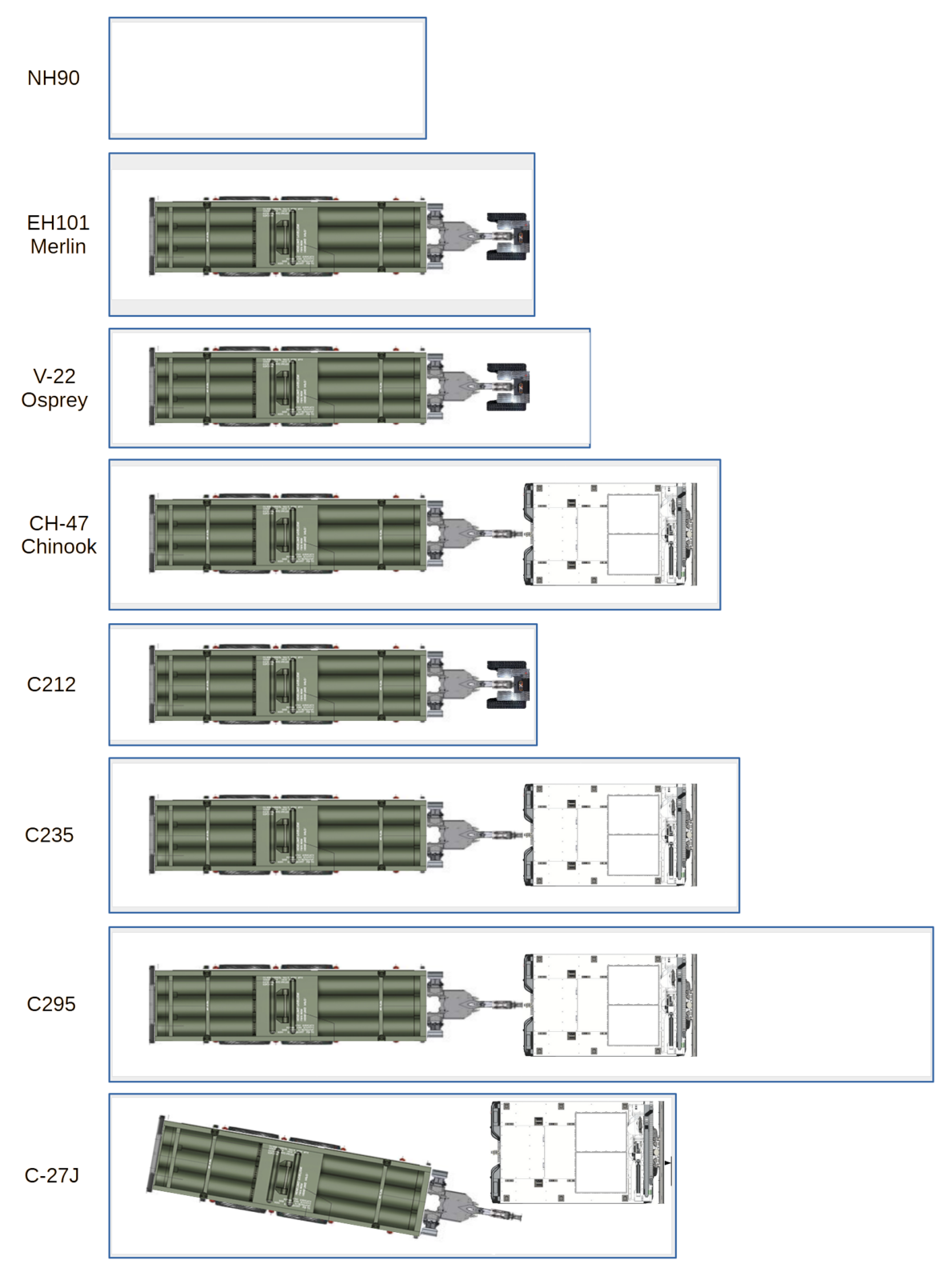
For simplicity and cost, the RANG-R is uncrewed, with some autonomy, but the launcher wouldn’t be, for simplicity and cost. I am still assuming that the entire system uses people.
Towing and Crew Vehicles
Having a trailer, towing vehicle, crew, fire control systems, and other equipment in a single aircraft flight appears to be unobtainable for any aircraft except the C-295.
Unless we want to put seats on something like the RANG-R, or are happy with limited mobility beyond the landing site, there just isn’t the room or usable payload.
This means there is a need for a second aircraft in most cases, no getting away from it.
If the first aircraft flight includes a towing tractor, or even the adapted mini forwarder in the previous post, there is no specific need for the second aircraft to carry a vehicle that can tow the trailer.
In these combinations, any vehicle that fits would do.
However, if the first aircraft does not include a towing tractor or adapted mini forwarder, then being able to tow a three tonne trailer is a fundamental requirement.
For the Chinook and C27J, there are numerous other vehicles in this size range that can tow a 3.5 tonne trailer, from a Toyota Hilux to a Bonetti FX100 truck. More defence focussed vehicles in this group include Flyer 72, Polaris Dagor, and GM Defense ISV.
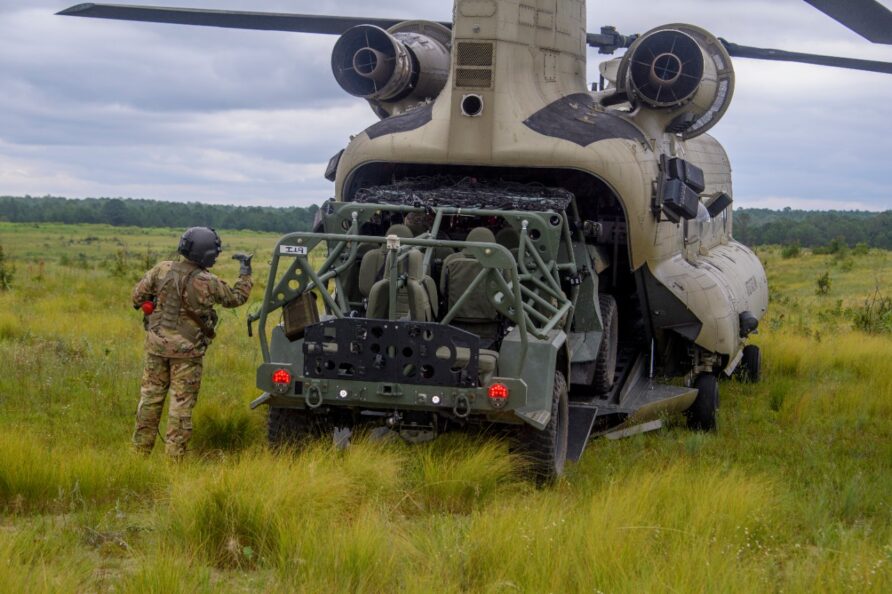
For Merlin and V-22, anything wider than 1.6 meters is a problem, loading and unloading will be difficult, and it is here that towing capacity tends to be significantly less than the requirements.
Certainly, all the so called ‘tactical golf carts’, even really capable models like the Flyer 60, tend to top out at about a tonne and a half or less towing capacity.

The Royal Marines with their Polaris MRZRs and USMC with their Polaris MRZR Alphas would also be out of spec, while the vehicles fit perfectly in their respective aircraft and are each very mobile, neither has the needed towing capacity.
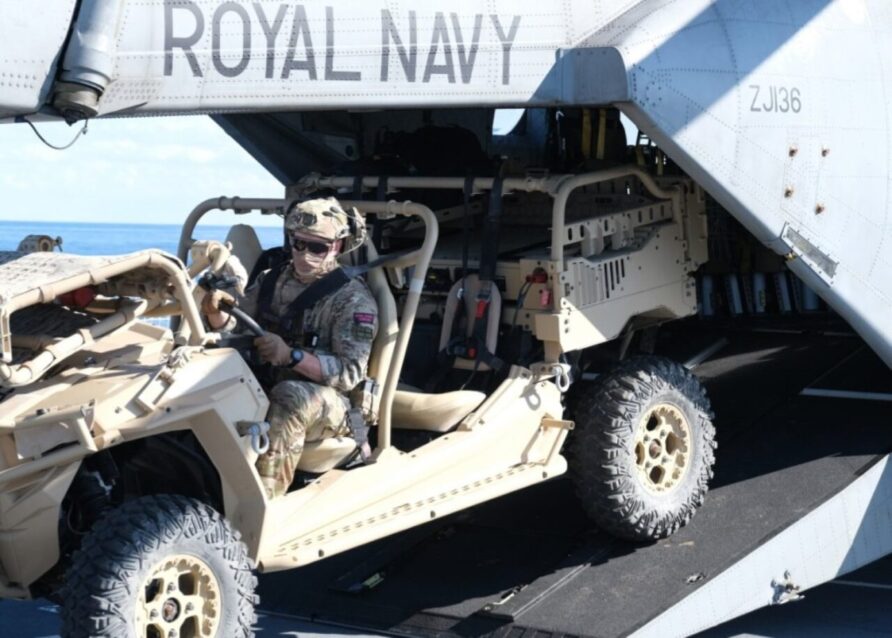
The image above also serves to illustrate the ramp angle issue, and how even at 1.51m wide, loading into a Merlin is still snug.
This forces us to consider non-mainstream defence options.
Again, a handful of examples.
The Supacat ATMP, read more here, is 3.4m long, and well known.
Slightly smaller, Scot Trac manufactures a range of multi-axle ATVs for use in the forestry, energy and industrial markets. The Scot Trac 2000R is a relatively compact design, but It would need a folding ROPS to fit inside a Merlin or Chinook. The width is just over 1.6m.
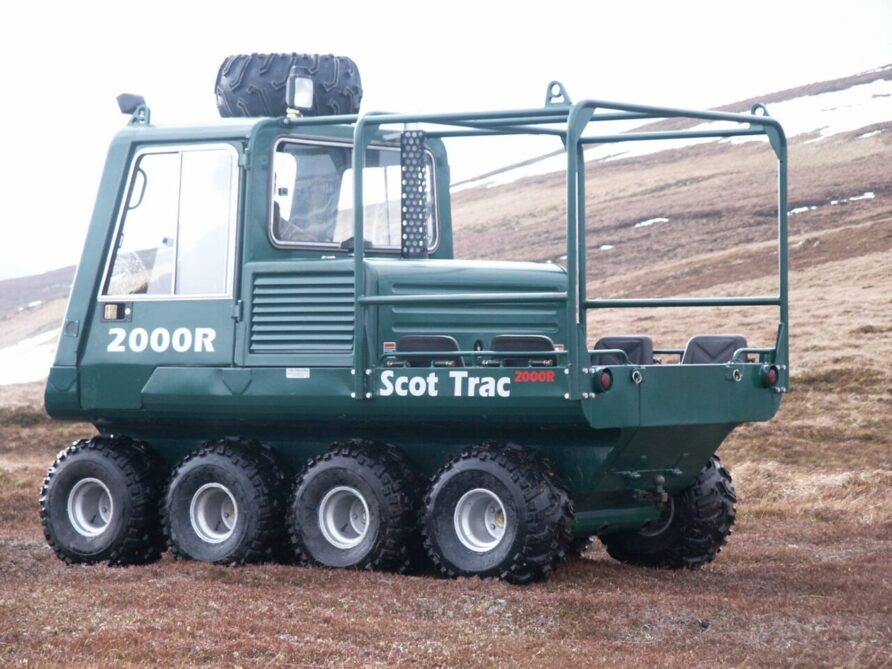
It has a top speed of 26 km/h and a kerb weight of 1.56 tonnes, with a payload of two personnel and 680 kg on the rear load bed.
The towing capacity is 2.5 tonnes and, given its most common use, has front and rear three-point linkages and hydraulic power take-off.
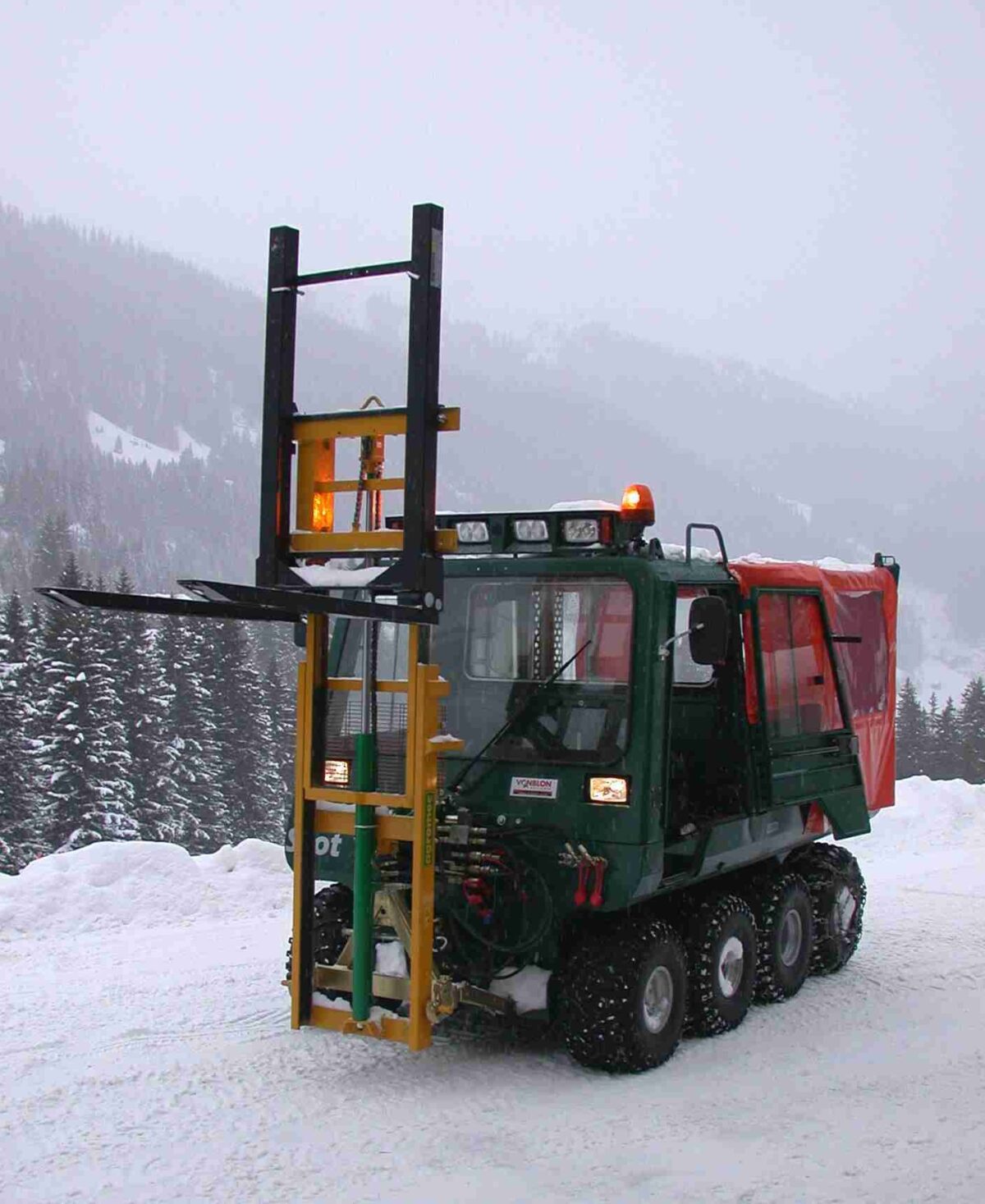
A more modern and powerful range of designs is from Agile Vehicle Technologies.
Made in the UK, at 3.2m long and 1.7m wide, the AVT 8×8 Minerva 4 Motor can tow a 3 tonne braked trailer whilst supporting a 2 tonne payload.
The most attractive aspects of AVT are the UK supply chain and IP, Big Bear Plastics manufactures the bodies, and Rotary Power the hydraulic power system, to name but two examples.
Another option would be something from the farmers market.
Caron, Goldoni, and others manufacture various single-seat agricultural load carriers.
An example is the Caron Evo, available in an articulated or front-wheel steering models, and in various sizes and payload capacities. The dimensions of the AR390 Evo 5 Model are 1.52m wide and 4.5m long, with a maximum weight of 3,500 kg, of which the payload is 1,760 kg.
The video below is of the larger AR690 model, but the 390 is quite similar.
With a folding ROPS, the height to the top of the steering wheel is 1.46m, and its towing capacity s 3.5 tonnes.
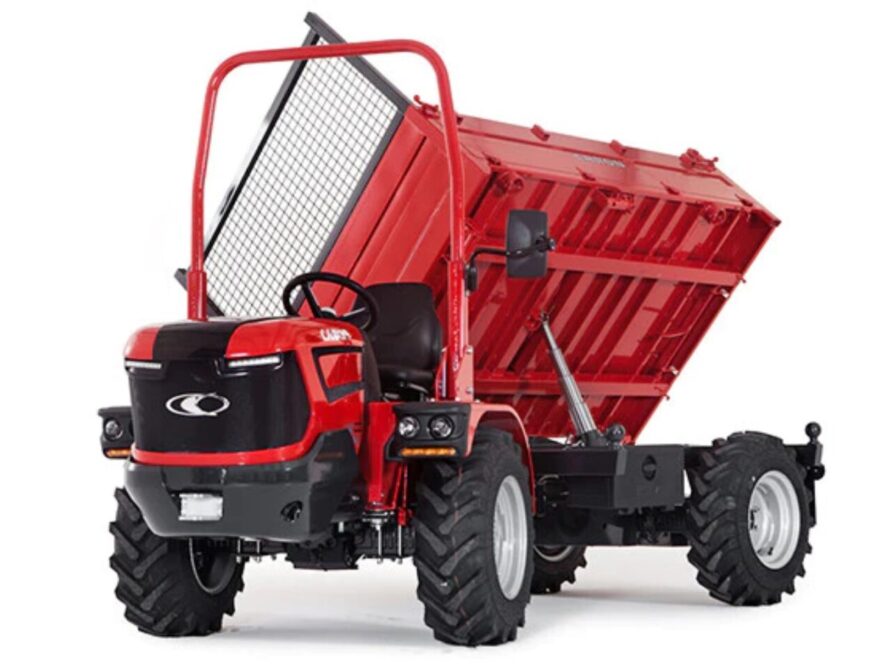
A rear PTO and hydraulic take-off is available for power assist trailers.
Whilst the payload, towing capacity, and dimensions are optimal for Merlin and Chinook, the obvious problem is the lack of seating for crew. The Goldoni Transcar has a similar design with a similar range of performance characteristics, but the non-articulating version has an option for three seats.
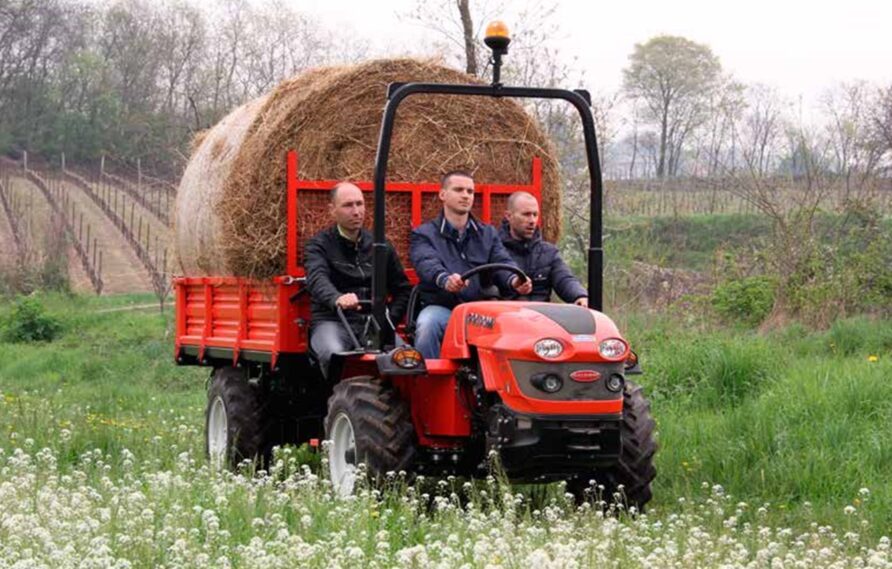
OK, I agree, it hardly looks like a declaration of war, but the performance figures speak for themselves.
The final oddball is the Alke ATX340EH Off Road Electric Vehicle, made in Italy.
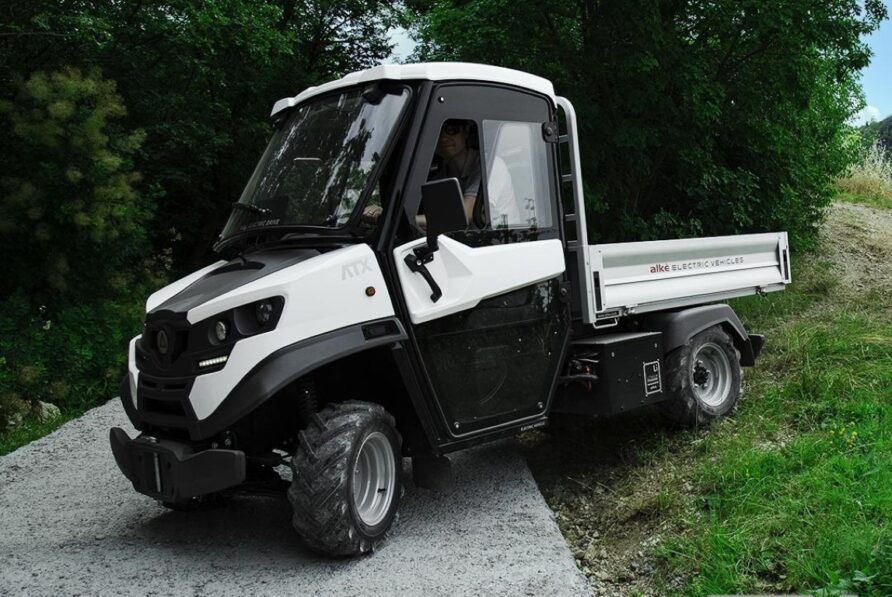
Let’s start with the two facts that it can tow 4.5 tonnes and is 1.4m wide, and go from there.
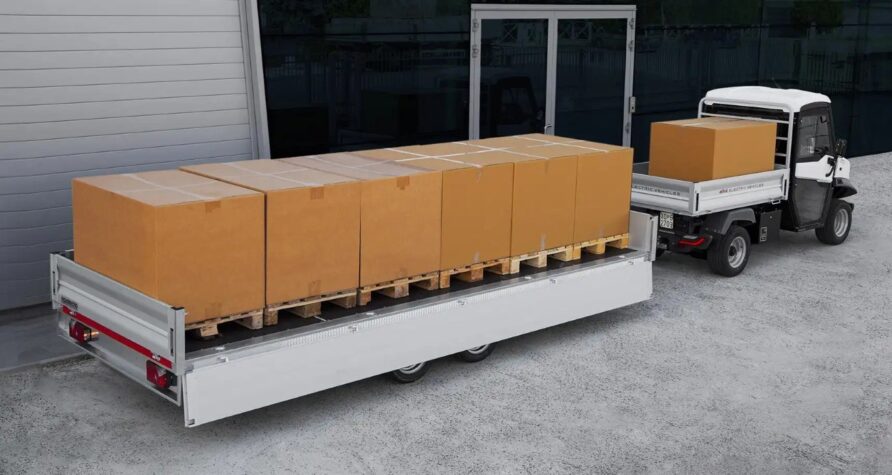
A crew cab version is available that provides a total of four seats, whilst still likely having enough space and payload for the fire control system and personal equipment.
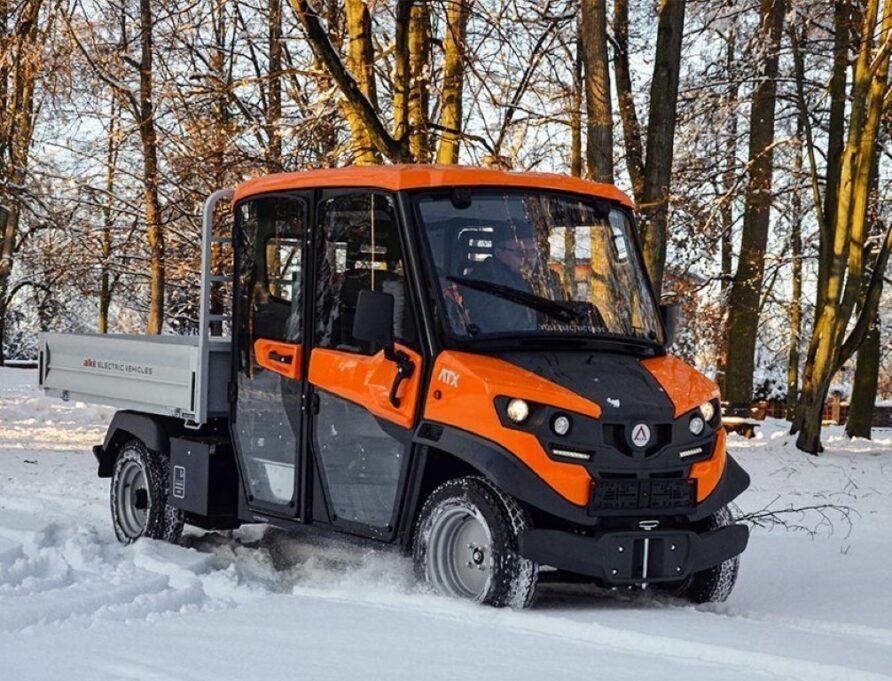
It weighs just over a tonne and is 1.9m high and 4.3m long.
Change to a standard cab and the length is reduced such that two could be carried in some aircraft as a single load, same number of seats, but resilience and extra capacity.
Not without issues, though.
There are no versions with a folding ROPS so that would be a development project to enable internal carriage in the helicopters and lower height fixed wing aircraft.
The words off-road are doing some heavy lifting, in this case it means farm tracks, and grass and gravel surfaces, not deep mud or snow.
Finally, it is an electric vehicle, so limited to approximately 140 km before it needs a 2.6 hour recharge.
If those limitations can be accepted, this is actually a great solution for this application.
Summary and Next Post
Hopefully, this post in the series highlights there are many challenges and potential solutions.
The next and final part of the series will examine growth options and use cases.

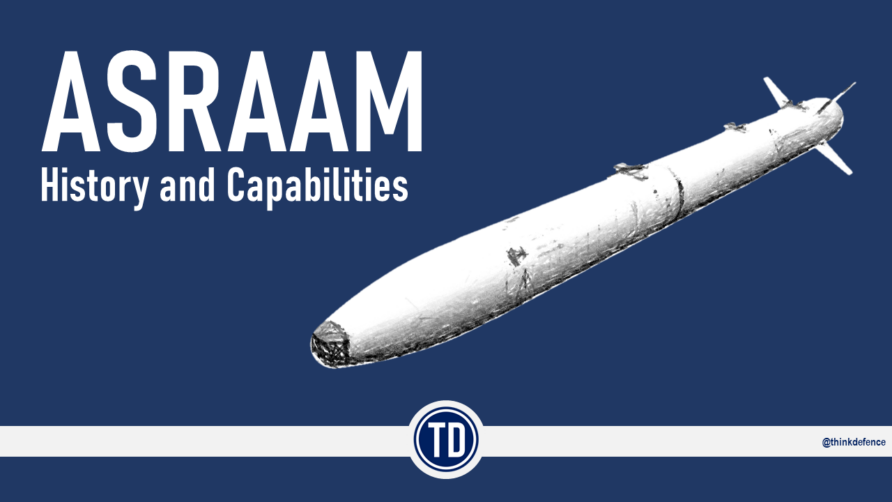
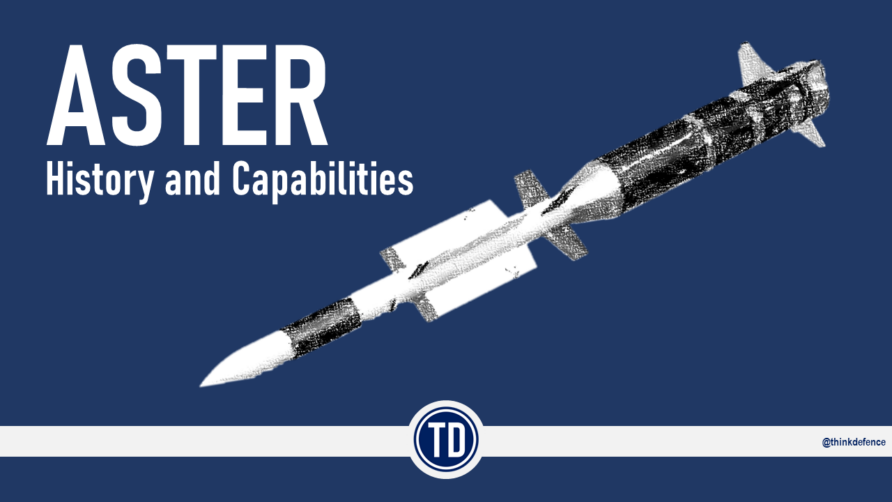
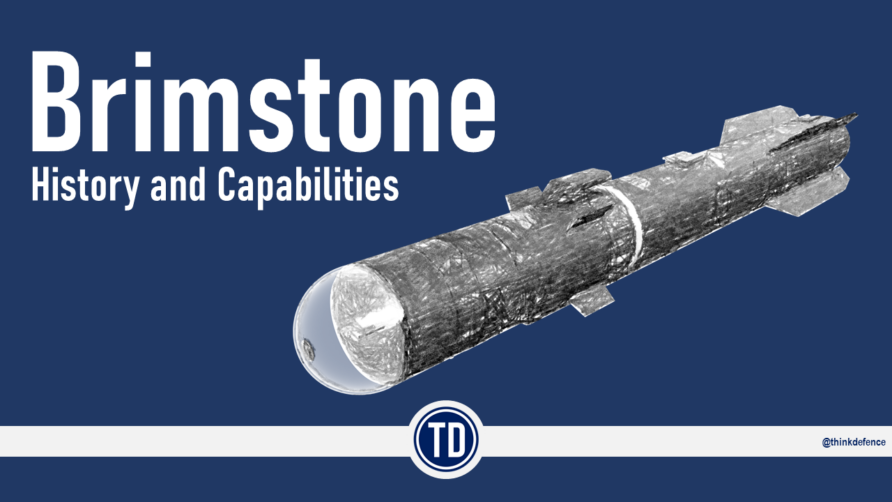
You've put a lot of effort into these posts about air mobile rocket launchers but I wonder to what end? The USMC have a clear benefit in being able to surreptitiously land a small force on a remote island that can then deny access to the enemy over a large area. Their use of Nmesis and Himars fits well with this. For the UK, I don't see the need for air-lifting mobile launchers to advanced positions that can't be reached by road or sea. If a target is too far away to be reached from behind your own lines then surely it's a job for an airstrike or attack with sea based missiles? Helicopters will be in short enough supply without finding new jobs for them.
@"Bloke down the pub" it's about keeping options open, so whilst it could load on a trailer for air transport it would also easily (and discretely) go on the back of a lorry for other uses.